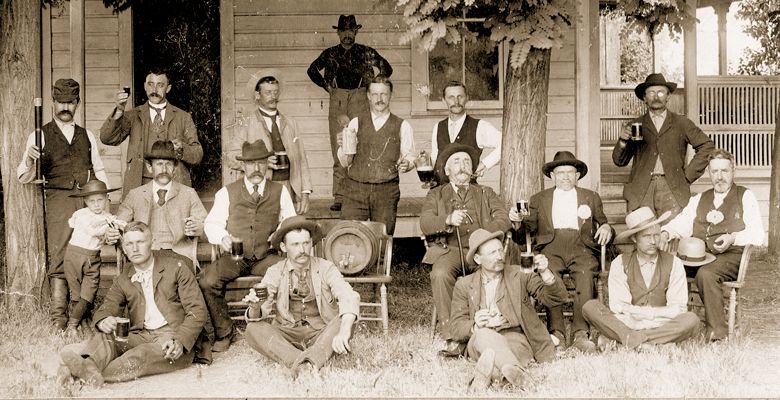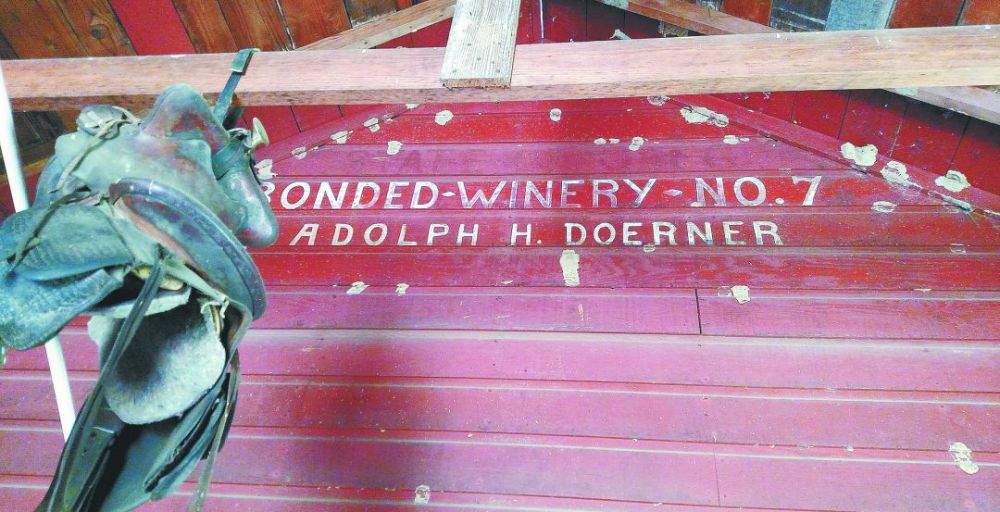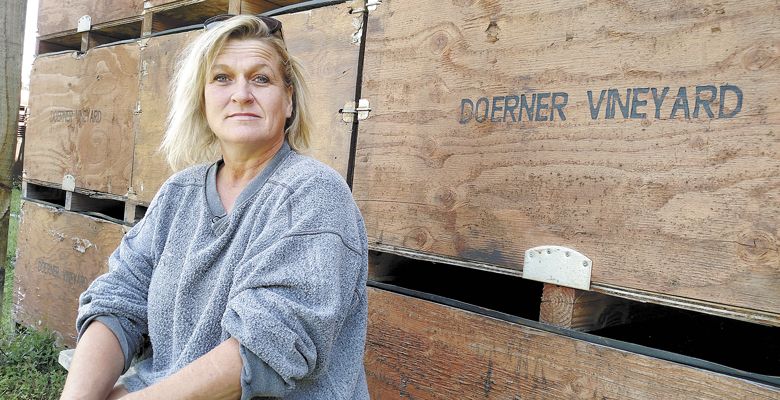Way-Back Wine
Legacy continues at Doerner Vineyards
It’s challenging to keep Christina Doerner’s attention for long. She’s eager to return to the tractor and out to the vineyard while the day is still cool and the winds are calm.
“I’m the fifth generation to live on this property,” Christina says. “I came into this business when my father, Douglas Doerner, was killed in a tractor accident, and I was the farmiest of the kids, so I was the one to come back and help run the operation in 1996.”
Christina’s great-great-grandfather, Adam Doerner, first planted grapes in 1889 on this Oregon Century Farm located in the Melrose area of the Umpqua Valley.
Adam left Ilbesheim, located in the Palatinate region of Germany in November of 1887 at the age of 29, making his way by steamship to Liverpool, then Philadelphia and, finally, the West Coast. Adam would have been well-versed in German winemaking traditions of the Palatinate, which dates to 1 A.D., when the Romans brought cultivated vines and winemaking equipment to the region. The sandy, slate soil of the Palatinate and climate were suited to Riesling, Pinot Gris and Pinot Blanc.
Family legend says Adam Doerner first gained employment at Beringer’s Winery in St. Helena, California, and may have come to hear of the Umpqua through the Von Pessl family, also from the Palatinate. Edward Von Pessl came to America in 1883 and worked in the Napa wine industry before buying vineyard property in Coles Valley.
The 1900 census reveals Adam had been married for 11 years, could read and speak English, and owned his home and farm outright. He grew Zinfandel, Riesling and a Sauvignon varietal. He also tended a fruit orchard, planted hay, and raised cattle and sheep.
“They had a distillery, up until Prohibition, where they made brandy,“ Christina says with a grin. Adam and his son, Adolph, sold juice for home winemaking during Prohibition. By 1923, Adolph determined a commercial winery made sense.
Adolph Henry Doerner’s winery was bonded as No. 7 — the Doerner family doesn’t have a record of the exact date. The Tualatin Valley Winery in Hillsboro was Oregon’s first bonded winery, and Hugo Neuman in Corvallis operated No. 3; both advertised fruit wines in the mid-1930s. Newspapers reported Columbia Distilleries owners, John Wood and Ron Honeyman, stood in line Dec. 6, 1933, the day after Prohibition’s repeal, to register their operation, bonded No. 26.
Adolph built his winery in 1935, the Roseburg News-Review noting simply Doerner was excavating for a concrete cellar and storage. The blueprints show a facility clearly marked A.H. Doerner’s Winery, drawn by Wayne L. Shaw and dated Sept. 9 of the same year. In 1949, updated plans for the winery detail the construction of eight concrete tanks, for fermentation and storage. Mike Wetherell, who married into the family, recalls the tanks were not lined and fermenting wine sealed them.
Adolph’s wine was called Melrose Wine, a fortified blend of Riesling, Pinot Gris and Pinot Blanc; it was considered a light wine, neither too dry nor too sweet. “Some older folks remember Doerner’s Dew,” Christina says, “But most everyone remembers Doerner’s Wine or Melrose Wine.”
In the 1940s, a half-gallon of A.H. Doerner’s Melrose red sold for a dollar at Wally’s in Roseburg, and by 1961, $1.19 at Byrds. Doerner’s wine production and sales were highest during WWII, shipping throughout the country. Adolph’s son, Ralph, installed bottling equipment in the winery when the farm was electrified in 1940.
By 1953, due to failing health, Adolph closed the winery, though he continued to sell stored inventory until his death in 1964. Around that time, Richard Sommer bought Doerner’s winemaking equipment for use at nearby HillCrest. The Doerner family kept the vineyards healthy and producing, selling fruit to area winemakers.
Fifth-generation farmer Christina Doerner, with her husband, continue the family tradition, living in Christina’s great-great-grandfather’s well-maintained home, storing a quad in the old winery and working the vines. What started with Adam Doerner’s one-acre vineyard in 1889, growing to six in the 1950s, is today more than 22 acres, with more on the way.
“Dad (Doug Doerner) grew Pinot Noir, Chardonnay, Riesling and Zinfandel,” Christina says, and she’s expanded the original vineyards, planting more Pinot Noir, Malbec and Tempranillo. They still have some of the old Zin grafted onto more contemporary, disease-resistant rootstock.
The Doerner vines are carefully tended, watered by hand for the first two years. Each fall, family and neighbors gather to harvest fruit, celebrating the family’s incredible history and good land. The resulting wine is evidence of the legacy started so many years ago — not to mention concrete wine tanks in the barn, capacity noted on each one in Adolph Doerner’s hand.













